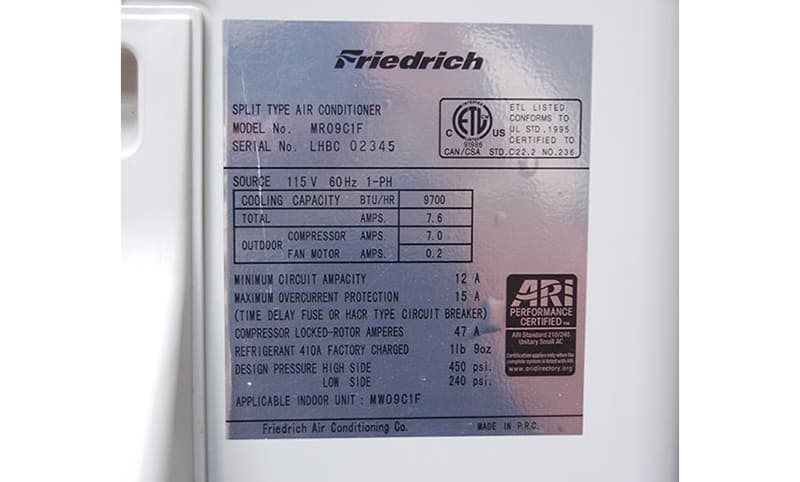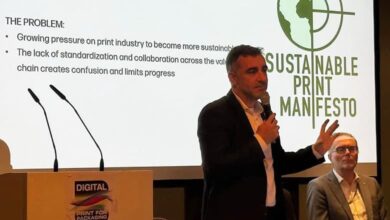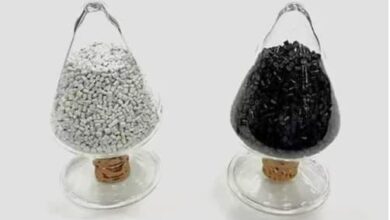
In the pursuit of better indoor air quality, today’s professionals in the air conditioning, heating, and refrigeration (AHR) industry are focusing on supply chain cost reductions and environmental friendliness. Original equipment manufacturers (OEMs) are now demanding new certification standards, including compliance with Leadership in Energy and Environmental Design (LEED), an international green building rating system that signifies environmentally sustainable building design, construction, and operation.
AHR professionals are also working towards developing greener ventilation systems that are energy-efficient, quieter, and provide superior filtration for healthier environments. Proper labeling plays a crucial role in helping OEMs meet these goals. The choice of labeling material can make a significant difference in whether an AHR system helps maintain good air quality or unintentionally contaminates the air it circulates. Additionally, the polymeric nature of the labeling surface makes it an unsuitable breeding ground for molds. With the assistance of an experienced label substrate supplier, OEMs can avoid potential pitfalls and reduce testing costs while expediting the design-to-market timeframe.
Examining the Limitations of Paper Labels
LEED certification has become a primary focus in the AHR industry and other fields as well. The LEED program, developed by the United States Green Building Council, represents a building rating system that certifies compliance with stringent environmental standards and signifies a commitment to environmentally sustainable building design, construction, and operation. Certification can also open doors to government incentive programs and garner recognition for being environmentally conscious.
Improving air quality remains a central objective of AHR quality improvement efforts. Achieving this goal involves minimizing the presence of mold, airborne allergens, and bacteria within AHR systems, as well as adopting new technologies to eliminate potential contaminants.
Surprisingly, labels can be a source of unexpected contaminants. For example, paper labels can serve as breeding grounds for mold. Mold is a versatile organism that can survive various temperature extremes. While it is commonly associated with damp environments, some molds require minimal moisture to thrive. Mold spores need an appropriate surface to survive and propagate.

Paper provides an ideal environment for mold growth. Its porous nature allows it to absorb moisture from the air, and its rough surface provides a suitable foundation for mold to anchor itself. Some molds are particularly attracted to papers backed with organic adhesives. Since the label itself is porous, the adhesive can become a food source for future spores.
Apart from potentially compromising air quality, paper labels can deteriorate when exposed to mold. Illegible labels or adhesive failures can have devastating consequences for OEMs. These labels often contain safety warnings, circuitry diagrams, and other critical consumer information. OEMs may face a loss of consumer confidence or liability concerns in the worst-case scenario. Despite these risks, paper labels have traditionally been used in air handlers and coils.
Pressure-Sensitive Film as a Solution
Pressure-sensitive films offer a healthier and more effective alternative to paper labels. The flexible nature of pressure-sensitive film provides design engineers with limitless possibilities in meeting rigorous AHR requirements. In many cases, pressure-sensitive film can address AHR concerns proactively, even before they arise.
The versatility of pressure-sensitive film stems from its composition, which consists of four layers of different materials: film, adhesive, topcoat, and liner. These layers can be combined in countless ways to best suit specific applications. The AHR industry can leverage the inherent characteristics of pressure-sensitive film labeling as a superior alternative to traditional paper labels. However, careful selection of the appropriate substrate is essential.
Choosing the wrong labeling material can lead to a myriad of problems. Issues such as poor print quality, production slowdowns during label printing, faded label graphics due to wear and tear, flawed scans, inaccurate readings of data matrix symbols, tunneling, flagging, or peeling of labels before the expected lifespan of the marked item is complete can undermine the purpose of AHR systems. To minimize overall product risk, it is crucial to include a label material assessment task in any product contract book or go-to-market plan.
Selecting the Right Marking Choice
In the majority of AHR applications, thermal-printed or thermal transfer labeling can successfully meet the requirements, even under moderately challenging environmental conditions. Another primary method is flexographic printing.
While data plates for AHR systems may be made of plastic, metal, or similar hard materials, a pressure-sensitive polymeric film offers the best choice for AHR labels. Pressure-sensitive (self-adhesive) polymeric films have distinct advantages over paper, including significantly greater durability and excellent printability for both human and machine readability of symbols and embedded information through thermal transfer technology. Various films, such as vinyl and polyester, along with different adhesives, allow for precise matching of labels to specific application requirements.
Establishing Performance Requirements
When seeking a labeling solution that meets AHR standards, the label material supplier can provide an appropriate product only when they have a clear understanding of the specific performance requirements. Therefore, it is imperative for the procurement manager or responsible party to ensure that the specifications are known and defined upfront. These factors include:
The expected lifespan of the item being marked.
The environmental conditions the label and marked item will encounter during the product’s lifetime, such as UV exposure, abrasion, chemicals, extreme heat, extreme cold, and cleaning agents.
The nature of the surface (rough, smooth, metal, wood, low surface energy plastic, etc.) to which the label must adhere.
The dispensing process used to affix the AHR label.
State, federal, or industry specifications beyond LEED requirements that the label must meet.
The printing process used for producing the AHR label (typically thermal transfer, but other print technologies may be employed).
When discussing AHR label needs with a label material supplier or printer, providing detailed information increases the likelihood of selecting the proper labeling material, thereby ensuring the label’s success in meeting the requirements. The ultimate goal is to optimize the solution, lower product risk, and reduce the total cost of ownership.
Choosing the Right Supplier
Whether working directly with a label material supplier or indirectly through a label printer, certain characteristics should be considered to maximize the chances of success. The right supplier will:
Offer off-the-shelf labeling products that have been pre-tested on specific surfaces to ensure necessary durability and performance characteristics.
Provide data on the expected performance of each product on those surfaces.
Create custom labeling products if the application requirements are unique, such as affixing a label to an unusual surface with specific texture, material, or curved shape or requiring reliable performance in harsh conditions involving abrasion, moisture, or cleaning solvents.
Provide scalability and flexibility to meet changing business and operational requirements, recognizing that suppliers are in competition for AHR products and cost considerations are increasingly important.
Contribute to lowering the Total Cost of Ownership (TCO) and the Total Applied Cost (TAC) of the supply chain, thereby reducing the overall risk and cost of AHR products.
Meet the product’s Lifecycle Statement of Objectives (SOO) and Key Performance Parameters (KPPs).
Experienced pressure-sensitive film suppliers are ready to collaborate with AHR professionals, ensuring their success in the marketplace. These suppliers are prepared to offer labeling materials that reduce design timeframes, provide enduring markings, and guarantee the overall success of AHR products. By providing suppliers with detailed performance requirements, professionals in the AHR industry can breathe a little easier when it comes time to label their products.
For more information visit www.flexcon.com





